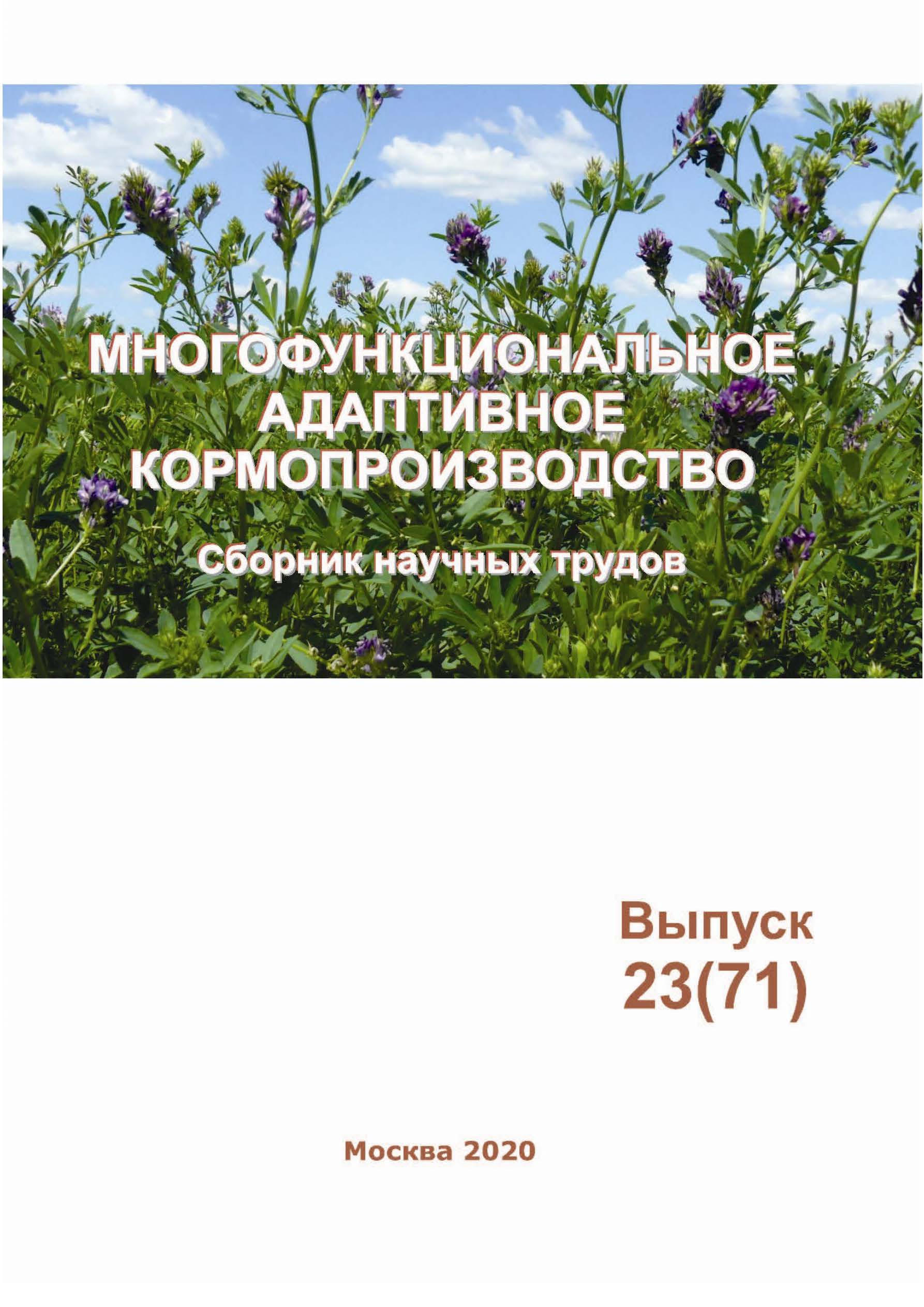Under conditions of East Siberia, the positive effect of sainfoin on the fertility of gray forest soil and the introduction of this crop into fodder five-course rotations have been studied. In Siberia the Hungarian sainfoin (Onobrychis arenaria) is well-spread. As a control variant the crop rotation without perennial legume crops (sainfoin-free) was taken. Our research on the introduction of a new legume crop — sainfoin has shown that the content of mobile phosphorus, on the average in crop rotations, varies from 15.3 to 17.1 mg per 100 g of soil, the value of the nitrate nitrogen indicator — from 21.5 to 25.3 mg/kg. The intake of organic matter into the soil, due to a green manure — sainfoin — increases the humus content to 4.8–4.9 %. The rise in the yield of cultivated grain-forage crops after perennial legumes has been proved. Thus, the yield of pea-oats amounted 2.0–2.4 t/ha feed units. Among the crops harvested for green mass corn was more productive. It provided 1.8–2.2 t/ha of feed units. Pea-oats gave less productivity — from 1.5 t/ha of feed units in a control variant to 1.8 t/ha of feed units in the variants with sainfoin. The yielding capacity of sainfoin was 2.1–2.2 t/ha of feed units. The average yield for crop rotations with sainfoin was higher than the control by 16.6 %. Taking the obtained data into account, it may be concluded that all three five-course crop rotations are productive, the best, according to all criteria, is the variant with two fields of sainfoin providing the decline in cost price up to 3529.9 rub. one feed unit, the high level of pure income 11848 rub./ha and the biggest coefficient of energy efficiency — 3.0
fodder crop rotations, sainfoin, yielding capacity, economic and energy indicators
1. Kuznecova E., Zakabunina E., Popov D. Povyshenie plodorodiya pochvy i urozhaynosti agrocenozov v RF // Glavnyy agronom. - 2010 - № 4. - S. 9-10.
2. Loshakov V. G. Sevooborot kak agroekologicheskaya osnova sistem zemledeliya // Nauchnye osnovy sistem zemledeliya i ih sovershenstvovanie. - N. Novgorod, 2007. -S. 10-14.
3. Nauchnye osnovy ispol'zovaniya zelenogo udobreniya v Volgo-Vyatskom regione : uchebnoe posobie / V. P. Zaikin, V. V. Ivenin, F. P. Rumyancev, S. Yu. Krivenkov // Nizhegorodskaya gosudarstvennaya sel'skohozyaystvennaya akademiya. - N. Novgorod, 2004. - 271 s.
4. Lisina A. Yu. Vliyanie sideracii na plodorodie svetlo-seryh lesnyh pochv i urozhaynost' ozimyh zernovyh v Volgo-Vyatskom regione : avtoref. dis. ... kand. s.-h. nauk: 06.01.01. - Nemchinovka, 2007. - 20 s.
5. Rumyancev F. P. Nauchnoe obosnovanie ispol'zovaniya zelenogo udobreniya v sevooborotah na seryh lesnyh pochvah Volgo-Vyatskogo ekonomicheskogo regiona : avtoref. dis. … d-ra s.-h. nauk: 06.01.01. - M., 2000. - 42 s.
6. Tyurin I. V. Usloviya nakopleniya organicheskogo veschestva v pochvah. Organicheskoe veschestvo pochvy i ego rol' v plodorodii. - M., 1965. - 53 s.
7. Dospehov B. A. Metodika polevogo opyta (s osnovami statisticheskoy obrabotki rezul'tatov issledovaniy). - M. : Kolos, 1979. - 416 s.
8. Kozlova Z. V. Bioekologicheskoe vliyanie klevera lugovogo v kormovyh sevooborotah na elementy plodorodiya pochv // Vestnik IrGSHA. - 2016. - № 76. - S. 48-53.
9. Menning P., Charakterisierung und bewertung der struktur landwirtschaftlich





